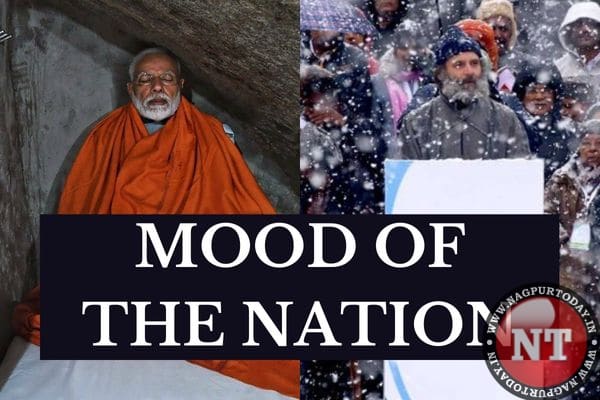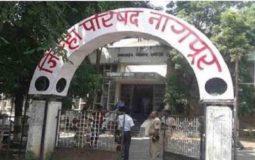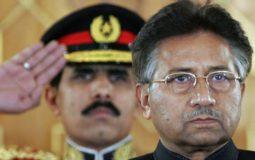
Opinion polls have the wonderful knack of going wrong, but that is mostly during election time. It is true not only in India but also in the West, where it all evolved over elections and decades.
Yet, periodic ‘mood-of-the-voter’ surveys are less toxic, and serve as pointers and guidelines for political parties, leaders and even governments to apply correctives, if they believed in such ‘scientific methods’ of mood-capturing and want to avoid political pot-holes, especially in the long run-up to the elections.
According to the latest of half-yearly, India Today-C-Voter national survey, Prime Minister Narendra Modi remains the favourite for the job in next year’s parliamentary polls, with a 52 per cent acceptance/preference.
A higher total of 72 per cent of the voters said they were satisfied with Modi’s performance as PM. Others considered for the job included Home Minister and the ruling Bharatiya Janata Party’s chief strategist Amit Shah (26 per cent), Uttar Pradesh Chief Minister Yogi Adityanath (25 per cent) and Union Minister Nitin Gadkari, considered an RSS favourite, (16 per cent).
Congress leader Rahul Gandhi, who was still in the midst of his Bharat Jodo Yatra, which did create a buzz and projected a positive image against the Sangh Parivar’s over-trumpeted ‘Pappu’ image and imagery, registered a 14 per cent acceptance.
Incidentally, the survey showed UP’s Adityanath as the nation’s best chief minister, a message as much for his party as to those in the political Opposition or, so it seems.
It does not stop there. In the survey, the ruling BJP is projected to win 284 seats, with allies adding another 14, or a total of 298, with a total NDA vote-share of 43 per cent, up from 41 per cent in August 2022.
In the previous 2019 Lok Sabha election, the combine had won a high 353 seats with the BJP alone bagging 303, up from the 282 in 2014, when Modi became prime minister.
Against this, the Congress-led UPA is expected to come a distant second with 153 seats, up from the two-digit figure of 91 (including Congress 52, up from 44 in 2014), with a two-per cent rise in vote-share from 28 to 30 per cent.
That leaves 121 seats out in the open, but most of them could be construed as anti-BJP (though not mentioned as such in the survey report).
The survey noted that the Modi government’s approval ratings too had gone up from 56 per cent in August 2022 to 67 per cent in January 2023. The study indicated that the percentage of individuals dissatisfied with the government had reduced from 32 in August to 18 now.
Notwithstanding what is in store a year from now, this should be a cause for current concern for the BJP. Though there is a marginal, two-seat increase in the party’s tally between the 2019 elections and the current survey, the overall impact of the loss of allies like the Janata Dal-United in Bihar and the Shiv Sena in Maharashtra seem to be showing more than earlier.
How it could reflect on the final figure remains to be seen, though it could go either way, as the results of 2019 showed.
But it is the survey figures on specific issues that could be an eye-opener, for knowing who between Modi and his BJP’s ideological RSS/Hindutva parent is possibly on the top just now. That should explain the perception that ‘Nagpur has lost the hold over Delhi’, often murmured in BJP-RSS circles.
Translated, it could mean that for want of an alternative, the conventional Hindutva brigade has little choice but to back and campaign for the continuance of Modi’s leadership of the nation, as they could not afford to take chances.
In policy terms, it implies there is more to electoral politics than ideology — and why Modi ends up adopting a give-and-take policy in the political arena.
Unlike his equally strong predecessors, including the BJP’s own Atal Bihari Vajpayee, he takes more and gets less, in terms of political accommodation and electoral compromises.
According to the survey, ideological issues like Article 370 and Ayodhya received only 14 and 12 per cent voter-backing, respectively. It could well imply that hardline Hindutva issues have only that much voter-purchase, compared to Modi’s overall popularity of 52 per cent — putting the man way above the mission.
That the hardline votes for the BJP compares well with Rahul Gandhi’s 14-per cent acceptance (again the hardliners from the other side of the spectrum, as it would seem). This only means that there are only so many ‘committed voters’ on either side of the ideological-divide, leaving the vast majority out of it, who may still want to be convinced more than at present.
This is where the BJP-NDA may have a problem on its hands, to be addressed effectively between now and the Lok Sabha polls, again going by the survey.
Accordingly, 25 per cent of those surveyed thought that ‘price rise’ was the ‘biggest failure’ of the Modi government, followed by unemployment (17 per cent).
Even the government’s handling of the Covid pandemic had only a 20 per cent approval rating, implying that personal experiences and/or critics’ campaigns seem to have had an impact.
This is the segment that the Opposition, split as they are, will be hoping and working to retain and build on.
Then, there are the untapped/untargeted sections, who seem to be included in the 72 per cent that is ‘satisfied’ with Modi’s leadership. They would cover the 37 per cent that felt Rahul’s Yatra had ‘created buzz’ but would not help to win elections.
It may be here that figures speak louder as ever. According to the survey, around 29 per cent agreed that the Yatra was a ‘great exercise’ at mass-connect, and the figure comes close to the Congress tally of 30 per cent.
Around 13 per cent of those surveyed described the Yatra as a ‘rebranding exercise for Rahul Gandhi’, and the figure comes close to the vote-share for other hard-line issues like 370 and Ayodhya.
Thus, there may be a substantial non-committed section that had seemingly voted for the Modi enigma twice in the last nine years, do not have much complaints about his leadership, yet seem to be restless for possible change — only if the other side(s) convince them that they could offer more, as much in deed as in words, going beyond slogans and branding like ‘India Shining!’ (BJP) and ‘Aam Aadmi’ (Congress), both 2004, and also ‘Aachhe Din’ (BJP, 2014).
It is here that the Opposition would have to do more than the BJP, whose limitations become more pronounced as they have done enough and more through nine years in office, leaving limited scope for fresh policies and programmes, the latter more than the former.
This is because having settled down well with the Modi leadership, the voter will become increasingly inward-looking, having got used to all that have come his way in the past close to a decade — and looking for more, and possibly of a different kind.
In a way, both the ruling party and the Opposition need to interpret the survey reporting that 68 per cent favoured a uniform civil code. The figure again comes closer to the preferential votes for the Congress, at 30 per cent — but does not at all correspond to the hard-line Hindutva numbers in favour of Ayodhya and Article 370 abrogation.
It also raises question for the BJP strategists, if an Ayodhya temple in the run-up to the elections would help the party or not. It applies also to issues such as the CAA.
Against this, the Opposition, after a 10-year break from power at the Centre, can and need to start off on a new slate. They would now have to stop their Modi and BJP-bashing, acknowledging that their negative campaigns of the kind, too, have peaked out like that of the BJP against ‘pseudo-secularism’, corruption, Nehruvian ideology and the Nehru-Gandhi family.
The Opposition will instead have to come up with specific policies and programmes to undo all the wrongs that they have been attributing to the BJP-NDA government, the guiding RSS ideology and the Modi leadership, and not necessarily in that order.
They will still have to do more, and come up with new initiatives and promises that would gel with the social media generation, which could check facts and figures at the swipe of their mobile screens than was possible even a decade or so back.
The survey may not influence voting in the multiple assembly polls across the country in the run-up to the Lok Sabha polls. In states like BJP-ruled Karnataka, where assembly polls are due in the next couple of months, where the Opposition Congress is said to be on the upswing, the survey could be a pointer for rival party strategists to work on.
Of course, they would have their own teams, undertaking such field research apart from guiding the respective party leaderships, on the day-by-day, if not minute-by-minute campaign strategies, also campaign slogans and ‘feed’ friendly media circles, some of which are hooked on to their ways, hook, line and sinker.
N Sathiya Moorthy, veteran journalist and author, is a Chennai-based policy analyst and political commentator.















